Apr 17, 2020
The best and worst seasons in Blue Jays history
Expectations heading into every Blue Jays campaign over 43 seasons play a huge role in how that season is ultimately judged when it ends, Scott Mitchell writes in the sixth of his nine-part series that looks at the best and worst in the franchise’s history.
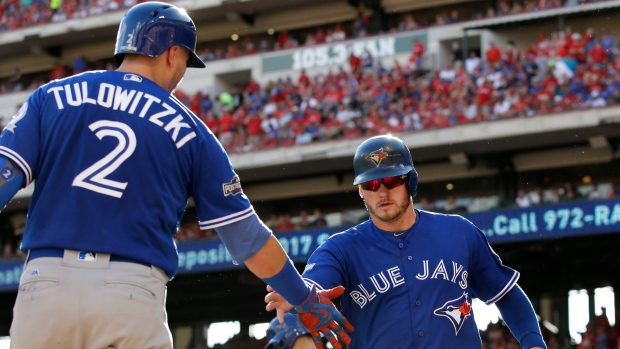
TORONTO — Followers of the Toronto Blue Jays will have no problem pointing out the highs.
A couple of rings and seven appearances in the American League Championship Series are an easy starting point for the best seasons in club history.
On the flip side, the lowlights are much more subjective, as any season — even some of those ALCS runs — that didn’t end with a ball touching either Joe Carter’s glove or bat could technically be defined as a disappointment.
Sifting through 43 campaigns to find the best and worst single-season snapshots, the expectations heading into each and every campaign play a huge role in how that season is ultimately described when it ends.
Another factor to consider is how much perception can change with the benefit of time.
Was the 2015 loss to the Kansas City Royals heartbreaking and extremely disappointing at the time and in the months that followed?
Without a doubt.
Is it one of their worst seasons because of that?
Absolutely not.
Of course, there are some stenches that tend to linger, especially in the case of the season I’ve outlined as the worst in franchise history.
From 1977 through 2019, a look at the highs and lows of Blue Jays baseball.
The Best and Worst of the Blue Jays on TSN.ca:
Mon, April 6 – The five best and worst signings
Wed, April 8 – The five best and worst outfielders
Fri, April 10 – The five best and worst games
Mon, April 13 – The five best and worst trades
Wed, April 15 – The five best and worst infielders
Fri, April 17 – The five best and worst seasons
Mon, April 20 – The five best and worst draft picks
Wed, April 22 – The five best and worst pitchers
Fri, April 24 – The five best and worst moments
The Best Seasons
5. (TIE) 2016 (ALCS No. 7), 1991 (ALCS No. 3), 1989 (ALCS No. 2)
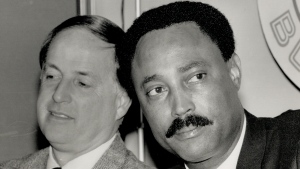 The Blue Jays have advanced to the ALCS seven times in club history, so we’re punching in the cheat code to get seven items on a list of five because you can’t leave any of them out.
The Blue Jays have advanced to the ALCS seven times in club history, so we’re punching in the cheat code to get seven items on a list of five because you can’t leave any of them out.
There may have been some heartbreak involved with the endings — it’s inevitable for every team but one every single season — but if you finish as one of the four best teams in baseball in any given year it has to be still deemed a success.
Tackling these three in chronological order, the 1989 season was a year of change that featured a 12-24 start and the franchise’s first in-season firing of a manager, as GM Pat Gillick canned Jimy Williams in May and replaced him with hitting coach Cito Gaston.
The team rolled to a 77-49 record from there, and they did most of it in a brand-new ballpark, moving from Exhibition Stadium to SkyDome in June.
Losing the ALCS in five games to the powerhouse Oakland A’s that year was nothing to be ashamed of.
After winning 86 games to finish second in 1990, the Jays made their way back to the postseason with a 91-win campaign in ’91, but ran into a hot Minnesota Twins team in the first all-domed stadium series in playoff history.
Unlike the last one, this ALCS loss in five games spurred major change heading into the 1992 season.
Finally, the 2016 loss to the Cleveland Indians, once again in five games, was an ALCS to forget because the Jays were never really in the series against a formidable Andrew Miller-led bullpen. But there were some highlights in the lead up to it, which included an Edwin Encarnacion walk-off homer in the wild-card game, as well as a sweep of the hated Texas Rangers in an ALDS rematch.
4. 1985
The Blue Jays really struggled as a franchise for their first six years in existence, before slowly breaking through with matching 89-win seasons in 1983 and ’84.
But the real turning point came in ’85 when the Jays ran away with the AL East to win their first pennant, breaking the 90-win barrier for the first time in franchise history with a 99-62 record under manager Bobby Cox.
Led by the Killer B’s in the outfield and a strong rotation anchored by Dave Stieb, Doyle Alexander, Jimmy Key and Jim Clancy, it’s still the best regular-season record in franchise history by three games.
It might have been the best season in franchise history in every way possible had it not been for an epic collapse in the ALCS in which they lost a 3-1 lead to the Kansas City Royals, losing the seventh game at home.
3. 2015
 When Joe Carter walked off Mitch "Wild Thing" Williams in the fall of 1993, no one could have imagined it would take 22 years for the Jays to get back to the postseason, let alone a World Series.
When Joe Carter walked off Mitch "Wild Thing" Williams in the fall of 1993, no one could have imagined it would take 22 years for the Jays to get back to the postseason, let alone a World Series.
But that’s exactly how it played out, as the early ‘90s teams were torn apart by trades and aging, while GM Gord Ash had trouble replicating what Gillick had been able to do.
The 2000s produced a decade of seasons that were either a complete mess or in no way memorable, as attendance dropped to about 1.5 million in 2010, the lowest it had been since 1982.
Then 2015 finally happened, after GM Alex Anthopoulos had spent a couple years making blockbuster trades in order to find the right mix.
The right mix ended up being a monster offence led by Jose Bautista, Edwin Encarnacion and AL MVP Josh Donaldson, and the trade deadline additions of Troy Tulowitzki and especially David Price, who helped lead the club to 93 wins, their most since ’93.
2. 1992
It may be harder to repeat, but you always remember your first, and the first World Series title was oh so sweet for Blue Jays fans across the country.
The 96 games the Jays won that year is still second most in franchise history, and many of the club’s postseason demons had been exorcised in the ALCS thanks to Robbie Alomar and company.
With the Atlanta Braves having lost the World Series in ’91, most of the pressure was on them against the retooled and all-in Blue Jays, but Gaston’s club had experienced its fair share of disappointment, too.
With five future hall of famers on the field — Tom Glavine, John Smoltz, Dave Winfield, Roberto Alomar and Jack Morris — it was Ed Sprague and Pat Borders playing hero as the Jays claimed their first-ever ring at Atlanta-Fulton County Stadium on Oct. 24, 1992.
1. 1993
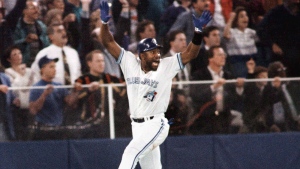 Why is ’93 at No. 1 over the first title in franchise history?
Why is ’93 at No. 1 over the first title in franchise history?
Two reasons.
The first is simple. It ended on Canadian soil, in Toronto, in front of a frenzied home crowd.
The second one is pretty simple, too. It ended with one swing.
The walk-off home run is what every baseball player dreams of from the day they pick up a bat, and Joe Carter was able to live out that dream in a Blue Jays uniform on Oct. 23, 1993.
From iconic broadcast calls to Carter hopping around the bases, everything about the way that season ended is memorable.
John Olerud chasing a .400 batting average and Paul Molitor’s arrival and subsequent .332/.402/.509 slash line helping to birth WAMCO provided a couple of signature moments on the way there.
The Worst Seasons
5. 1994
The Blue Jays were five games under .500 at 55-60 when the strike wiped everything out in 1994.
It was a disappointing end to the three-peat bid, but at least they were still defending champions heading into the strike-shortened ’95 season.
This is where things went sideways for the franchise in a hurry.
With Gillick resigning at the end of the 1994 season and handing the keys to Ash, the Jays stumbled to a 56-88 record during the 144-game ’95 campaign, finishing in last place in the AL East.
It was a tough period for Blue Jays fans to swallow as most of the key pieces from the World Series teams were jettisoned, including Alomar, who signed with the Baltimore Orioles as a free agent on Dec. 21, 1995.
The Jays wouldn’t get back over the .500 mark until 1998.
4. 2019
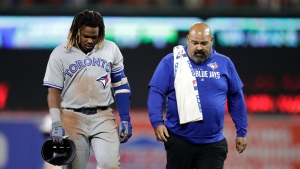 Oh, hey. It’s the season everyone just lived through.
Oh, hey. It’s the season everyone just lived through.
Yes, there were many fun days when prospects arrived and a new individual era would begin, but Edwin Jackson running up an 11.12 ERA happened, as did manager Charlie Montoyo’s legendary “We don’t have anybody else,” answer when I asked him why the veteran was going to get another start in June.
Fans were also forced to spend way too much time watching players like Socrates Brito, Alen Hanson, Nick Kingham and Zack Godley while waiting for the kids to arrive.
Add it all up and the Jays’ 95 losses were the most for the franchise since 1980 and the .414 winning percentage was the lowest since the awful season you just read about in 1995.
Attendance fell to 1.75 million, the lowest it’s been since 2010, and the Jays went through a club record 39 different pitchers on their way to a third consecutive fourth-place finish in the AL East.
It’s getting better, but that was rock bottom.
3. 1979
In a 109-loss campaign, still the worst to date for this franchise and very hard to top, there are going to be some ugly moments.
None uglier than a debacle during a late August homestand in 1979.
With a 40-88 record, manager Roy Hartsfield & Co. were simply playing out the string, dreaming of a vacation and a fresh start.
Not long after the 1:02 p.m. first pitch at Exhibition Stadium, the Angels were pounding on the Jays and kicking them while they were down, scoring eight runs in the first, three in the second, two in the third, three in the fourth, one in the fifth, and five in the six to take what some would call a commanding 22-2 lead.
When all was said and done, the Angels belted out 26 hits, DH Don Baylor had driven in eight runs, and the 24-2 loss is still the most runs the Jays have allowed in team history.
That 22-run margin of defeat was equalled on Sept. 28, 2000, when the Baltimore Orioles hung 23 on the Jays at Camden Yards in a 23-1 drubbing.
2. 2013
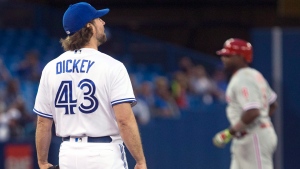 Nineteen years into the playoff drought, Anthopoulos loaded up in the off-season, pulling off a pair of blockbuster trades with the Miami Marlins and New York Mets to get Jose Reyes, Mark Buehrle, Josh Johnson and reigning NL Cy Young winner R.A. Dickey.
Nineteen years into the playoff drought, Anthopoulos loaded up in the off-season, pulling off a pair of blockbuster trades with the Miami Marlins and New York Mets to get Jose Reyes, Mark Buehrle, Josh Johnson and reigning NL Cy Young winner R.A. Dickey.
Outsiders loved the Jays’ retooling so much that they were one of the favourites in the American League heading into the 2013 season.
This is where the expectations come into play.
With hopes sky high both for the fan base and the team in the clubhouse, the bumbled their way to a 10-17 record in the month of April and the season quickly went down the drain.
A scorching hot June provided some hope as they went 17-9 with a plus-42 run differential, but they closed out the final three months with a 34-47 record to finish 14 games under .500.
1. 1987
Coming off choking away a 3-1 series lead in the ALCS in 1985, the Jays fell to 86 wins and missed the postseason altogether in ’86.
In 1987, though, it looked like they were back on track, starting the season 28-19 through the first two months thanks to eventual AL MVP George Bell leading what was the most potent offence in club history up to that point.
Attendance was at an all-time high, Fred McGriff had just arrived on the scene as a rookie, while Tom Henke had developed into one of the most dominant closers in baseball.
Everything seemed to be coming together ... until the final week of the regular season.
At that point, the Jays had a 3.5 game lead on the Detroit Tigers in the AL East race and their second pennant was well within reach.
Then the Jays lost the series finale to the Tigers on Sunday, Sept. 27.
The lead was down to 2.5 games.
Hosting the Milwaukee Brewers for three games at Exhibition Stadium, the Jays were promptly swept, setting up a loser-goes-home three-game series with the Tigers to finish the season.
Once again, the Jays were swept, losing seven straight to finish two games back of Detroit and miss the postseason with 96 wins.
It doesn’t get any worse than that.


